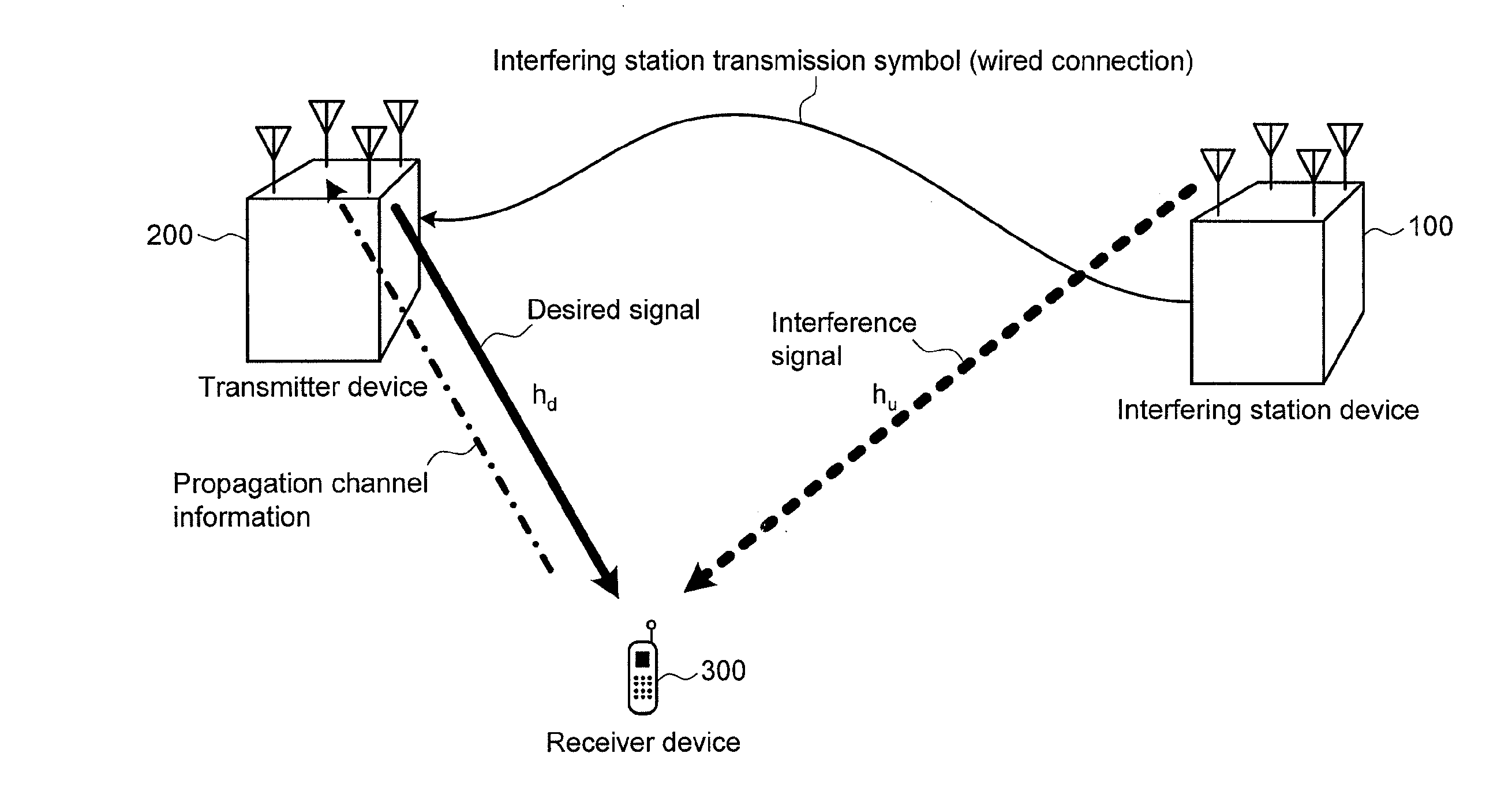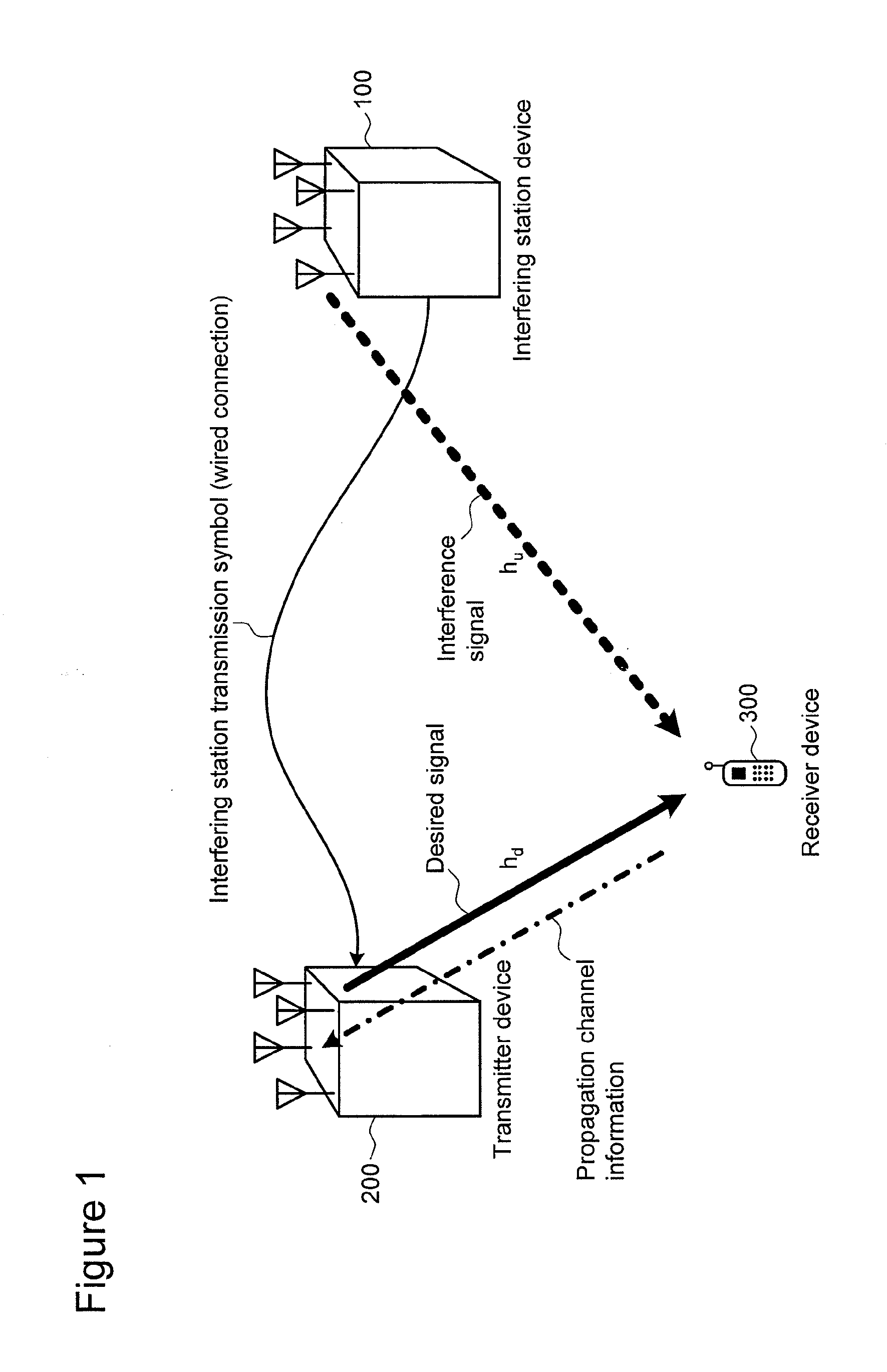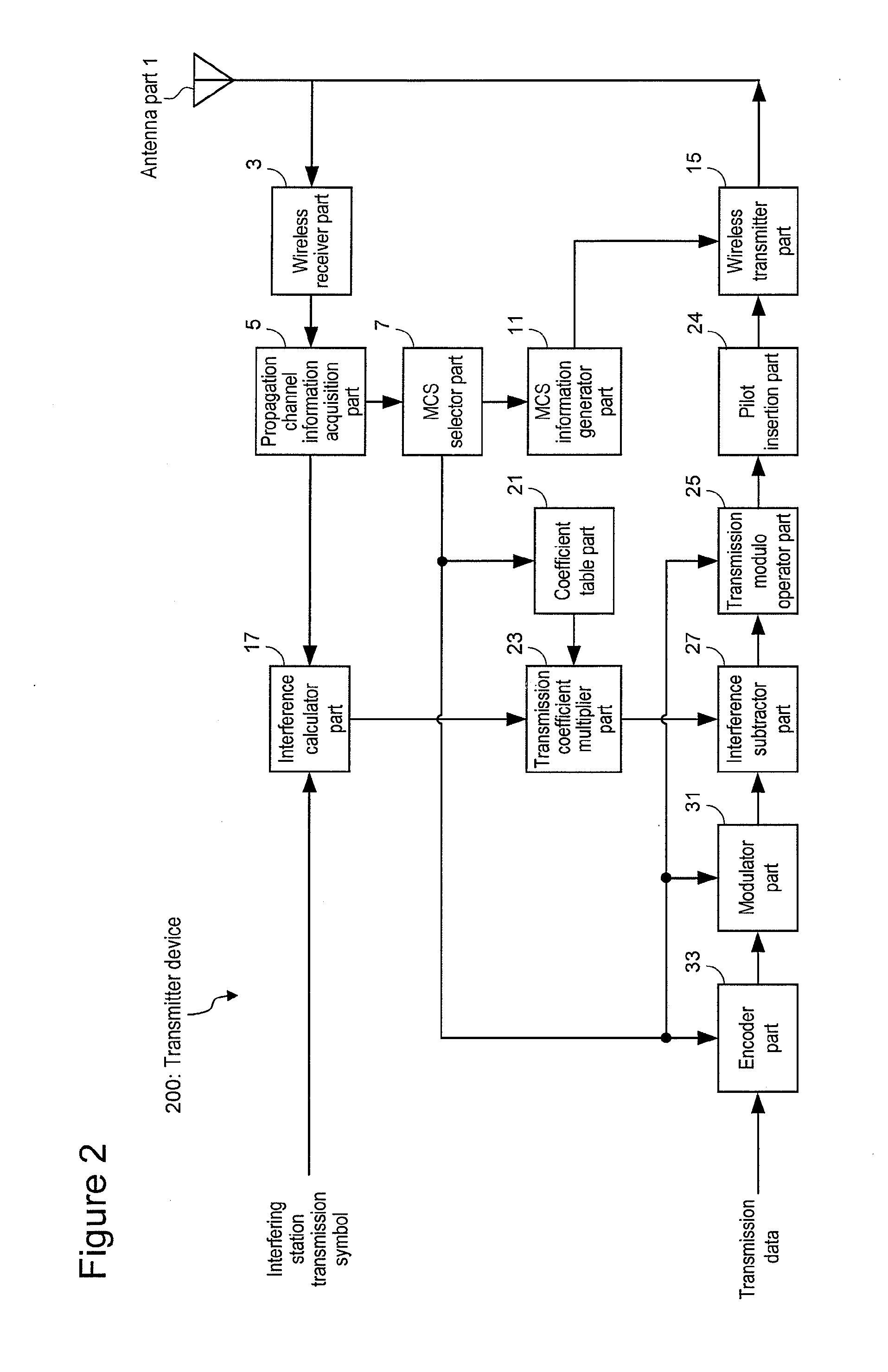Transmitter device, receiver device, and wireless communication system
a technology of transmitter device and receiver device, applied in the direction of transmission monitoring, receiving device monitoring, line-transmission details, etc., can solve the problem of increasing transmission power, and achieve the effect of preventing an increase in control information
- Summary
- Abstract
- Description
- Claims
- Application Information
AI Technical Summary
Benefits of technology
Problems solved by technology
Method used
Image
Examples
first embodiment
[0051]FIG. 1 is a figure showing a schematic configuration example of a wireless communication system with respect to the first embodiment of the present invention.
[0052]As shown in FIG. 1, for a wireless communication system with respect to the present embodiment, there is assumed a wireless communication in which, with respect to a desired signal with which a transmitter device 200 transmits data to a receiver device 300, a signal transmitted by an interfering station device 100 is received by the receiver device 300 as an interference signal. A specific example might include a case where, with respect to two base station devices (or relay station devices, etc.) that constitute different cells or sectors in a cellular system, there exists a terminal device that communicates with one of those base station devices, and a signal that the other base station device transmits to another terminal device is received by the terminal device.
[0053]The transmitter device 200 is, in advance an...
second embodiment
[0096]FIG. 8 is a functional block diagram showing a configuration example of a transmitter device 200a with respect to the second embodiment of the present invention. A description will be provided here only with respect to parts that differ from the transmitter device 200 in FIG. 2, while omitting descriptions for like parts.
[0097]A coefficient table information acquisition part 35 detects coefficient table information notified by a receiver device 300a, which is included in the signal received by the wireless receiver part 3 via the antenna part 1. If coefficient table information is detected, the detected coefficient table information is outputted to a coefficient table part 21a.
[0098]Once coefficient table information is inputted, the coefficient table part 21a replaces the coefficient table it holds with the inputted coefficient table information.
[0099]FIG. 9 is a functional block diagram showing a configuration example of the receiver device 300a with respect to the second e...
third embodiment
[0117]FIG. 12 is a functional block diagram showing a configuration example of a transmitter device 200b with respect to the third embodiment of the present invention. A description will be provided here only with respect to parts that differ from the transmitter device 200a in FIG. 8, while omitting descriptions for like parts.
[0118]A response acquisition part 37 detects a positive response indicating the fact that reception has been carried out successfully (ACK: Acknowledgment) or a negative response indicating the fact that reception has not been carried out successfully (NACK: Negative Acknowledgment), which is notified from a receiver device 300b and contained in a signal received by the wireless receiver part 3 via the antenna part 1.
[0119]If the error rate of the reception data measured at the response acquisition part 37 is higher than the requisite error rate (many errors), or if it falls far below the requisite error rate (few errors), a table update request generator par...
PUM
 Login to View More
Login to View More Abstract
Description
Claims
Application Information
 Login to View More
Login to View More - R&D
- Intellectual Property
- Life Sciences
- Materials
- Tech Scout
- Unparalleled Data Quality
- Higher Quality Content
- 60% Fewer Hallucinations
Browse by: Latest US Patents, China's latest patents, Technical Efficacy Thesaurus, Application Domain, Technology Topic, Popular Technical Reports.
© 2025 PatSnap. All rights reserved.Legal|Privacy policy|Modern Slavery Act Transparency Statement|Sitemap|About US| Contact US: help@patsnap.com



